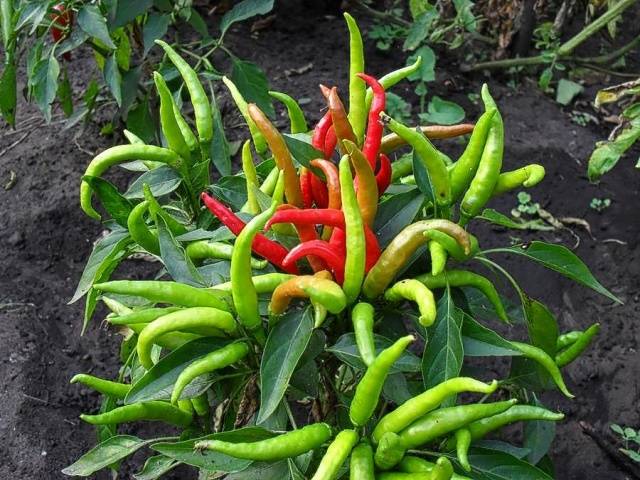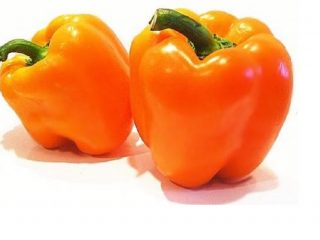Content
Whatever our country’s gardeners grow on their plots. Among the cultures familiar to our eyes, you can also meet exotic guests from distant countries. These guests include red capsicum. This Mexican pod is related to the potato, tomato and eggplant. It is more closely related to our bell pepper. It differs from it only in its burning, pungent taste. Due to the benefits hidden in it, red pepper is confidently gaining popularity in our country. Let's take a closer look at this Mexican guest.
Benefits of red capsicum
Capsicum red pepper, like other members of the nightshade family, is very rich in vitamins and minerals. The following stand out in its composition:
- vitamins C, E, K, B;
- iron;
- potassium;
- calcium;
- sulfur;
- essential oils and others.
The most important element contained in its spicy fruits is capsaicin. It is this substance that gives capsicum its spicy, even burning taste. Accordingly, the more of it there is in pepper, the hotter it will be. Kansaicin is able to strengthen the body's immune defense and fight various infections.But its most important property is its destructive effect on cancer cells.
Due to its composition, red capsicum will help with:
- cardiovascular diseases;
- women's problems with the menstrual cycle - it is important to start adding red pepper to food before the start of the menstrual cycle;
- overweight;
- insomnia;
- depression and other disorders of the body.
The use of hot capsicum fruits should be moderate. If consumed in excess, they will do more harm than good.
Characteristics of varieties
There are many varieties of red hot peppers. They differ from each other in different shapes and sharpness. Experienced gardeners and gardeners in our country especially highlight the following varieties.
Indian summer
This is an excellent variety of hot capsicum, which is suitable both for growing on the plot and for growing on the windowsill. The variety received this name for the September ripening of its burning fruits. About 100 days will pass from the moment of germination. Its ornamental bushes up to 40 cm high are strewn with small dark green leaves. The fruits of hot peppers are located singly or in pairs in the axils of the leaves. The bush looks very impressive during fruiting - strewn with small round fruits and berries. The color of peppers of this variety changes during ripening from green to bright red. The weight of mature peppers will not exceed 25 grams. From one bush you can collect up to 1 kg of fruit.
A distinctive feature of this variety of hot capsicum is its shade tolerance. It will easily grow and bear fruit even where daylight is between 30 and 40%. In addition, the Indian Summer variety is resistant to various garden viruses.
Jellyfish
This variety is distinguished by its early ripening. Spicy pepper Medusa will ripen in just 72 days from germination. Its bush is quite compact and will not exceed 32 cm in height and 22 cm in width. Due to its size, it is perfect for growing in a flower pot.
Each bush of this variety can produce from 30 to 50 hot peppers. Due to the similarity of the fruiting bush with the head of the Gorgon Medusa, this variety got its name. According to its form long peppers and thin. Their length will be about 5.5 cm, and their diameter will not exceed 1.5 cm. Before full ripening, peppers of the Medusa variety manage to change their color several times: from green to yellow and orange. The ripe fruit is colored red.
Plants of the Medusa variety are extremely demanding of soil moisture. They cannot stand it drying out, as well as dry air. To ensure the required level of humidity, it is even recommended to spray them.
Ogonyok
Ogonyok is one of the most popular varieties for growing both on the windowsill and on the plot. This mid-early perennial variety with compact bushes is the result of crossing Chilean and cayenne hot peppers. The burning fruits of the Ogonyok variety reach their technical ripeness after 120 days, and biological ripeness after 140 days from emergence.
Each pepper weighs about 40 grams and has an elongated, slightly curved shape.The green color of the unripe fruit changes to bright red as it ripens. Ripe pepper of the Ogonyok variety is quite spicy, with a characteristic peppery aroma.
The Ogonyok variety has good immunity to bacteriosis. This is a very heat-loving variety of hot pepper, so its yield will be greater when grown in greenhouses - about 4 kg per square meter.
Recommendations for cultivation
Capsicum red peppers are perhaps the only representatives of the nightshade family that can successfully grow at home.
When grown at home, hot capsicums do not require a special soil composition. For it, you can use both universal soil and soil prepared yourself. To do this, you need to take leaf soil, humus, sand and peat in a ratio of 2:1:1:2. Prepared soil or universal substrate must be disinfected before planting seeds. To do this, use boiling water or a solution of potassium permanganate.
For planting you need to use a 2 liter pot. It is filled 1/3 with drainage and 2/3 with earth. Expanded clay or charcoal are suitable for drainage. Pre-soaked hot pepper seeds are planted in holes up to 1 cm deep and covered with soil. You can plant no more than 3 seeds in one pot. After planting, the pot with hot pepper seeds is covered with polyethylene and placed in a warm, bright place. When the first shoots appear, the film should be removed. Further care includes:
- Regular watering. For this, only warm, settled water is used.Plants should be watered only as needed, when the top layer of soil dries out. Hot peppers will not tolerate stagnation of moisture.
- Feeding. For home growing, you can use complex mineral fertilizers. It is recommended to fertilize during the period of flowering and fruit set.
Despite the fact that at home, hot capsicums can bear fruit quite well, the best results are shown when grown in a greenhouse. Residents of the southern regions can even grow it in open ground.
Growing hot peppers in the garden is no different from growing bell peppers. Like its sweet brother, hot capsicum loves sandy and medium-loamy soils with a neutral acidity level and is particularly demanding of light and heat.
Hot red pepper seedlings begin to be prepared from February to March. If the seeds are purchased, they can be planted without soaking. It is still recommended to soak your seeds from the previous harvest. A nutrient solution or any growth stimulator is perfect for this. The depth of sowing seeds and the distance between them should be about 1 cm. The optimal temperature for germination will be 25-27 degrees.
After germination, weak shoots must be removed, leaving only one strong one. Planting seeds in peat pots shows good results.
As soon as young plants develop 2-3 pairs of leaves, they should be transplanted to a permanent place. When they reach a height of 20 cm, you need to pinch off the top of the plants.If this is not done, it will grow upward and will not form side shoots. In total, the plant should have up to 5 strong shoots. The rest, usually the lower ones, need to be removed.
Regular watering and fertilizing 1-2 times a month is the key to a rich harvest of this crop.
The video will tell you more about growing capsicums in a greenhouse:












